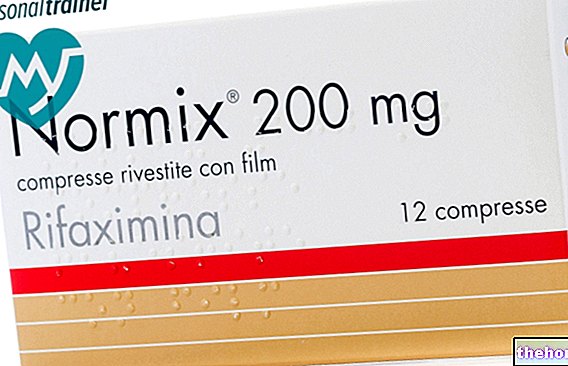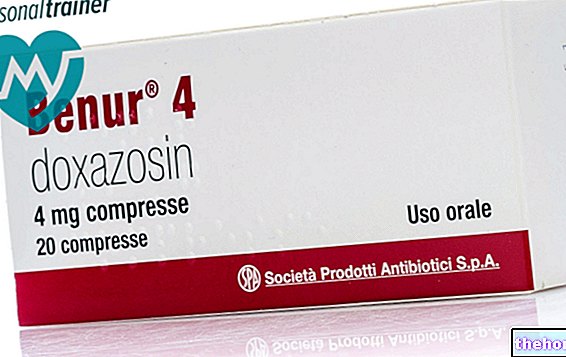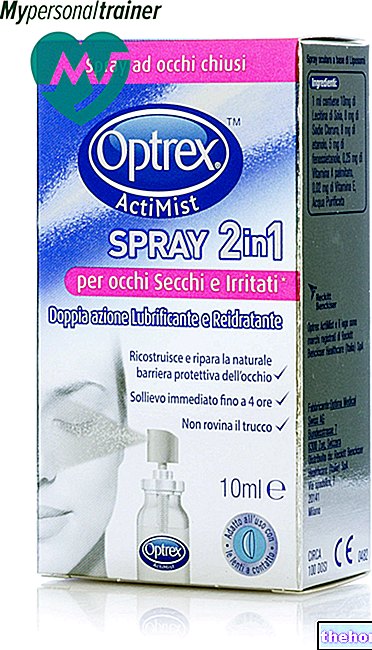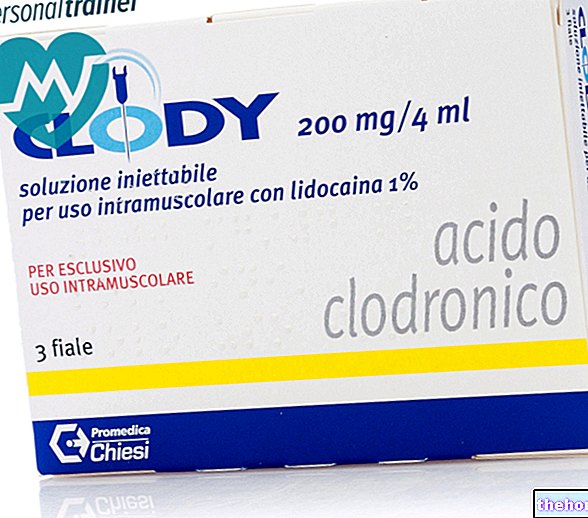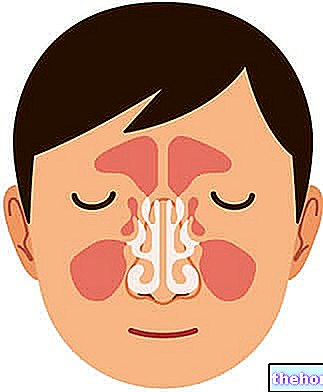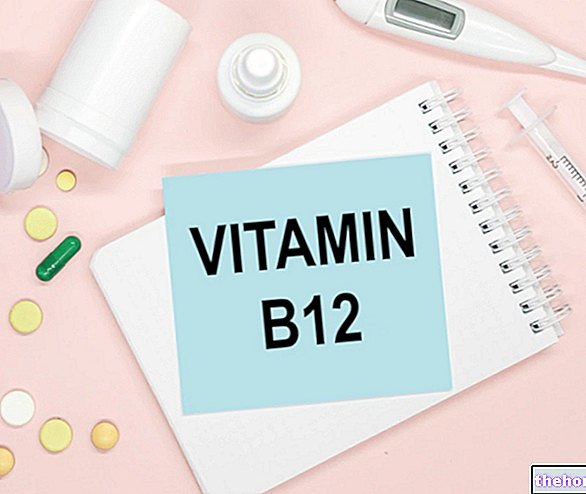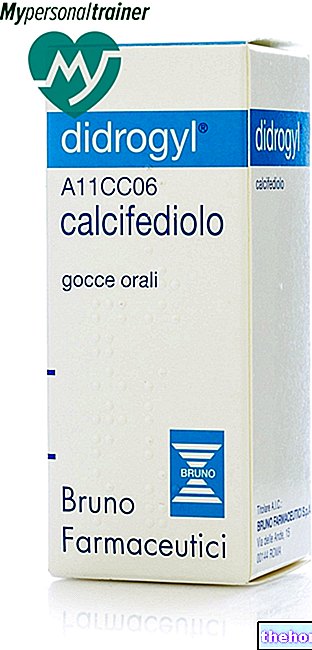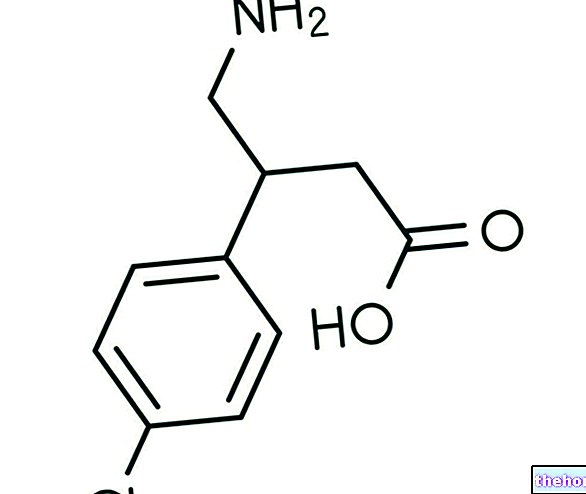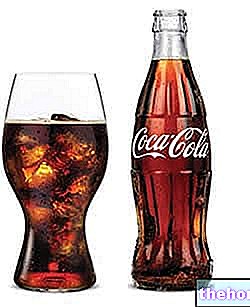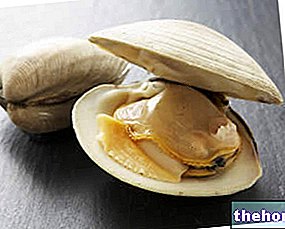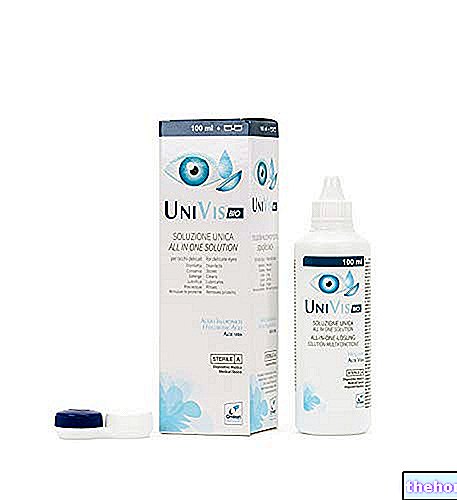Active ingredients: Ezetimibe
ABSORCOL 10 mg tablets
Why is Absorcol used? What is it for?
ABSORCOL is a medicine to reduce raised cholesterol levels.
ABSORCOL decreases the levels of total cholesterol, the "bad" cholesterol (LDL cholesterol) and the fats called triglycerides in the blood. ABSORCOL also increases the levels of "good" cholesterol (HDL cholesterol).
Ezetimibe, the active ingredient in ABSORCOL works by decreasing the absorption of cholesterol from the intestine.
The decrease in cholesterol levels caused by ABSORCOL is in addition to that caused by statins (a group of medicines that work by reducing the body's own production of cholesterol). Cholesterol is one of several fatty substances found in the bloodstream.
Total cholesterol is mainly composed of LDL cholesterol and HDL cholesterol.
LDL cholesterol is often called "bad" cholesterol because it can build up in the artery walls and form plaques. Over time, this plaque buildup can lead to narrowing of the arteries. This narrowing can slow or block blood flow to vital organs such as the heart and brain. This blockage of blood flow can cause a heart attack or stroke.
HDL cholesterol is often called "good" cholesterol because it helps prevent bad cholesterol from building up in the arteries and protects against heart disease.
Triglycerides are another form of fat in the blood that can increase the risk of heart disease.
It is used for patients who cannot control their cholesterol levels by reducing their cholesterol levels with diet alone. You must be on a cholesterol-lowering diet while taking this medicine.
ABSORCOL is used as an adjunct to your cholesterol-lowering diet if you have:
- an increased blood cholesterol level (Primary hypercholesterolaemia [familial and non-familial heterozygote])
- together with a statin, when your cholesterol is not adequately controlled with a statin alone
- alone, when statin treatment is inappropriate or not tolerated
- a hereditary disease (homozygous familial hypercholesterolaemia) which increases the level of cholesterol in the blood. You will also be prescribed a statin and may be prescribed another treatment
- an inherited disease (homozygous sitosterolemia, also known as phytosterolemia) - which increases the levels of plant sterols in the blood
. ABSORCOL does not help you lose weight.
Contraindications When Absorcol should not be used
Do not take ABSORCOL if:
- you are allergic (hypersensitive) to ezetimibe or any of the other ingredients of this medicine (see section 6. Contents of the pack and other information).
Do not take ABSORCOL together with a statin if:
- you currently have liver problems;
- are pregnant or breastfeeding.
Precautions for use What you need to know before taking Absorcol
If you are prescribed ABSORCOL together with a statin, please read the package leaflet for that specific medicine you are prescribing.
Tell your doctor about any conditions you have, including allergies.
Your doctor should order a blood test before starting ABSORCOL therapy together with a statin. This is to check how his liver is working.
Your doctor may also ask you to have blood tests to check how your liver is working after you start taking ABSORCOL together with a statin.
If you have moderate or severe liver problems, the use of ABSORCOL is not recommended.
The safety and efficacy of ABSORCOL administered in combination with some cholesterol-lowering medicines, fibrates, have not been established.
Children
ABSORCOL is not recommended for children under 10 years of age.
Interactions Which drugs or foods may change the effect of Absorcol
Tell your doctor or pharmacist if you are taking or have recently taken any other medicines, even those obtained without a prescription.
In particular, tell your doctor if you are taking medicines with any of the following active substances:
- cyclosporine (often used in organ transplant patients)
- medicines with an active substance that prevents blood clotting, such as warfarin, phenprocoumon, acenocoumarol or fluindione (anticoagulants)
- cholestyramine (also used to lower cholesterol), as it alters the effectiveness of ABSORCOL
- fibrates (also used to lower cholesterol).
Warnings It is important to know that:
Pregnancy and breastfeeding
Do not take ABSORCOL together with a statin if you are pregnant, trying to get pregnant, or if you think you may be pregnant. If you become pregnant while taking ABSORCOL together with a statin, you must stop both treatments immediately and contact your doctor. There is no experience with the use of ABSORCOL in pregnancy without a statin. If you are pregnant, ask your doctor for appropriate recommendations before using ABSORCOL.
Do not take ABSORCOL together with a statin if you are breast-feeding, as it is not known whether the two medicines are excreted in human milk. ABSORCOL, even when taken on its own without a statin, should not be used while breastfeeding. Ask your doctor for appropriate recommendations.
Ask your doctor or pharmacist for advice before taking any medicine.
Driving and using machines
No effects of ABSORCOL on the ability to drive or use machines are expected. However, it should be taken into account that some people may feel dizzy after taking ABSORCOL.
ABSORCOL contains lactose
ABSORCOL tablets contain a sugar called lactose.
If you have been told by your doctor that you have an intolerance to some sugars, contact your doctor before taking this medicinal product.
Dose, Method and Time of Administration How to use Absorcol: Posology
Always take ABSORCOL exactly as your doctor has told you.
Continue to take your other cholesterol-lowering medicines, unless your doctor tells you to stop using them. If you are unsure, consult your doctor or pharmacist.
- Before you start taking ABSORCOL, you must follow a cholesterol-lowering diet.
- You must continue to follow this cholesterol-lowering diet while taking ABSORCOL.
Adults, adolescents and children (10 to 17 years of age): The dose is one 10 mg tablet of ABSORCOL once a day, to be taken by mouth.
You can take ABSORCOL at any time of the day and regardless of meals.
If your doctor has prescribed ABSORCOL together with a statin, the two medicines can be taken at the same time. In this case, please also refer to the specific dosing instructions contained in the package leaflet of the other prescribed medicine.
If your doctor has prescribed ABSORCOL together with another cholesterol-lowering medicine containing the active substance cholestyramine or any other medicine containing bile sequestrants, you should take ABSORCOL at least 2 hours before or 4 hours after taking the bile sequestering agent.
If you forget to take ABSORCOL
Do not take a double dose; simply resume your usual dose at the usual time the next day.
If you have any further questions on the use of this medicine, ask your doctor or pharmacist.
Overdose What to do if you have taken too much Absorcol
Contact your doctor or pharmacist.
Side Effects What are the side effects of Absorcol
Like all medicines, ABSORCOL can cause side effects, although not everybody gets them.
The following terms are used to describe how often side effects have been reported:
Very common (may affect more than 1 in 10 patients) • Common (may affect up to 1 in 10 patients) • Uncommon (may affect up to 1 in 100 patients) Rare (may affect up to 1 in 1,000 patients) • Very rare (may affect up to 1 in 10,000 patients, including isolated cases)
Contact your doctor immediately if you experience unexplained muscle pain, muscle tenderness or weakness. This is because, on rare occasions, muscle problems, including injury to muscle tissue resulting in kidney damage, can be serious and potentially life-threatening.
Allergic reactions have been reported with common use of the medicine, including swelling of the face, lips, tongue, and / or throat which may cause difficulty in breathing or swallowing (which requires immediate treatment).
When used alone, the following side effects have been reported:
- Common: abdominal pain; diarrhea; flatulence; feeling tired.
- Uncommon: increases in some liver laboratory tests (transaminases) or muscle function (CK); cough; indigestion; stomach ache; nausea; joint pain; muscle spasms; neck pain; decreased appetite; pain; chest pain; hot flashes; high blood pressure.
In addition, the following side effects have been reported when the medicine was used together with a statin:
- Common: increases in some laboratory tests of liver function (transaminases); headache; muscular pain; muscle tenderness or weakness.
- Uncommon: tingling sensation; dry mouth; itch; rash; urticaria; back pain; muscle weakness; pain in arms and legs; unusual tiredness or weakness; swelling especially of the hands and feet.
When used together with fenofibrate, the following common side effect has been reported: abdominal pain.
In addition, the following side effects have been reported with general use of the medicine: dizziness; muscle aches; liver problems; allergic reactions including rash and hives; raised red rash, sometimes with target-shaped lesions (erythema multiforme); muscle pain, muscle tenderness or weakness; muscle tissue injury; gallbladder stones or inflammation of the gallbladder (which can cause abdominal pain, nausea, vomiting); inflammation of the pancreas often accompanied by severe abdominal pain; constipation; decreased number blood cells, which can cause bruising / bleeding (thrombocytopenia); tingling sensation; depression; unusual tiredness or weakness; shortness of breath.
If you get any side effects, talk to your doctor or pharmacist. This includes any possible side effects not listed in this leaflet.
Expiry and Retention
Keep this medicine out of the sight and reach of children.
Do not use this medicine after the expiry date which is stated on the carton or container after "EXP". The expiry date refers to the last day of that month.
Do not store ABSORCOL above 30 ° C.
Blisters: Store in the original container.
Bottles: keep the bottle tightly closed. These measures will help protect the medicine from moisture.
Do not throw any medicines via wastewater or household waste. Ask your pharmacist how to throw away medicines you no longer use. This will help protect the environment.
Other information
What ABSORCOL
- The active substance is ezetimibe. Each tablet contains 10 mg of ezetimibe.
- The other ingredients: lactose monohydrate, microcrystalline cellulose, povidone, croscarmellose sodium, sodium laurilsulfate, magnesium stearate.
Description of how ABSORCOL looks and contents of the pack
ABSORCOL tablets are white to off-white, capsule-shaped tablets debossed with "414" on one side.
Packaging:
- 7, 10, 14, 20, 28, 30, 50, 98, 100 or 300 tablets in push-open blisters or unit dose blisters with lamina lift-open;
- 84 or 90 tablets in push-open blisters;
- 50, 100 or 300 tablets in push-open blisters per unit dose;
- 100 tablets in bottles.
Not all pack sizes may be marketed.
Source Package Leaflet: AIFA (Italian Medicines Agency). Content published in January 2016. The information present may not be up-to-date.
To have access to the most up-to-date version, it is advisable to access the AIFA (Italian Medicines Agency) website. Disclaimer and useful information.
01.0 NAME OF THE MEDICINAL PRODUCT
ABSORCOL 10 MG TABLETS
02.0 QUALITATIVE AND QUANTITATIVE COMPOSITION
Each tablet contains 10 mg of ezetimibe. Excipient (s):
Each tablet contains 55 mg of lactose monohydrate.
For the full list of excipients, see section 6.1.
03.0 PHARMACEUTICAL FORM
Tablet.
Capsule-shaped, white to off-white tablets approximately 2.60 mm thick, debossed with "414" on one side.
04.0 CLINICAL INFORMATION
04.1 Therapeutic indications
Primary hypercholesterolemia
ABSORCOL, given with an HMG-CoA reductase inhibitor (statin), is indicated as an add-on to diet in patients with primary hypercholesterolemia (heterozygous familial and non-familial) who are not adequately controlled on statins alone.
ABSORCOL monotherapy is indicated as add-on to diet in patients with primary hypercholesterolaemia (heterozygous familial and non-familial) for whom statins are considered inappropriate or are not tolerated.
Homozygous Familial Hypercholesterolaemia (Homozygous IF)
ABSORCOL given with a statin is indicated as add-on therapy to the diet in patients with homozygous familial hypercholesterolaemia. The patient may also be subjected to further therapeutic measures (for example, LDL apheresis).
Homozygous Familial Sitosterolemia (Phytosterolemia)
ABSORCOL is indicated as an add-on to diet in patients with homozygous familial sitosterolemia.
A beneficial effect of ABSORCOL on cardiovascular morbidity and mortality has not yet been demonstrated.
04.2 Posology and method of administration
The patient should follow an adequate cholesterol-lowering diet and should continue the diet during treatment with ABSORCOL.
The medicine should be administered orally. The recommended dose is one tablet of ABSORCOL 10 mg once daily. ABSORCOL can be administered at any time of the day, regardless of meals.
When ABSORCOL is added to a statin, therapy should be continued at the common starting dosage indicated for the specific statin or the higher previously prescribed dosage should continue to be used. In this circumstance, the data sheet for that particular statin should be consulted.
Concomitant administration with bile acid sequestrants
The administration of ABSORCOL should take place either at least 2 hours before or at least 4 hours after the administration of a bile acid sequestering agent.
Use in the elderly
No dosage adjustment is required in elderly patients (see section 5.2).
Use in pediatric patients
The initiation of treatment must be carried out under the supervision of a specialist.
Children and adolescents ≥10 years (pubertal status: boys in Tanner stage II and higher and girls who have been post-menarche for at least one year): no dosage adjustment is required (see section 5.2). However, the clinical experience in pediatric and adolescent patients (10 to 17 years) is limited.
When ABSORCOL is given with a statin, the dosing instructions for the statin in children should be consulted.
Children> 6 and
Children
Use in hepatic impairment
No dosage adjustment is required in mild (Child-Pugh score 5 to 6) hepatic impairment. Treatment with ABSORCOL is not recommended in patients with moderate (Child-Pugh score 7 to 9) or severe ( Child-Pugh score> 9), (see sections 4.4 and 5.2).
Use in renal impairment
No dosage adjustment is required in renal impairment (see section 5.2).
04.3 Contraindications
Hypersensitivity to the active substance or to any of the excipients.
When ABSORCOL is given together with a statin, refer to the technical data sheet of the medicine.
ABSORCOL therapy given together with a statin is contraindicated during pregnancy and lactation.
ABSORCOL given together with a statin is contraindicated in patients with active liver disease or with persistent and indeterminate elevated serum transaminase values.
04.4 Special warnings and appropriate precautions for use
When ABSORCOL is given together with a statin, please refer to the technical data sheet of the medicine.
Liver enzymes
In controlled clinical trials in which patients were treated with ABSORCOL and a statin, consecutive elevations in transaminases (≥3 times the upper limit of normal [ULN]) were observed. In case of concomitant administration of ABSORCOL with a statin, liver function tests should be performed at initiation of treatment and as recommended for the statin (see section 4.8).
In a controlled clinical trial in which over 9,000 patients with chronic kidney disease were randomized to receive ABSORCOL 10 mg in combination with simvastatin 20 mg daily (n = 4,650) or placebo (n = 4,620) (median follow-up period of 4.9 years), the incidence of consecutive transaminase elevations (> 3 ULN) was 0.7% for ABSORCOL in combination with simvastatin and 0.6% for placebo (see section 4.8).
Skeletal muscle
Cases of myopathy and rhabdomyolysis have been reported in post-marketing experience with ABSORCOL. Most patients who developed rhabdomyolysis were on concomitant therapy with ABSORCOL and a statin. However, rhabdomyolysis was reported very rarely with ABSORCOL monotherapy and very rarely with the addition of ABSORCOL to other agents known to be associated with an increased risk of rhabdomyolysis. If myopathy is suspected on the basis of muscle symptoms or is confirmed by creatine phosphokinase (CPK) levels> 10 times the upper limit of normal, taking ABSORCOL, any statin and any other medicines of this type that the patient concomitant medication should be discontinued immediately.All patients initiating therapy with ABSORCOL should be advised of the risk of myopathy and advised to promptly report any unexplained muscle pain, tenderness or weakness (see section 4.8).
In a clinical study in which over 9,000 patients with chronic kidney disease were randomized to receive ABSORCOL 10 mg in combination with simvastatin 20 mg daily (n = 4,650) or placebo (n = 4,620) (median follow-up of 4.9 years), the incidence of myopathy / rhabdomyolysis was 0.2% for ABSORCOL in combination with simvastatin and 0.1% for placebo (see section 4.8).
Hepatic insufficiency
Due to the unknown effects of the increased exposure to ezetimibe in patients with moderate or severe hepatic impairment, ABSORCOL is not recommended (see section 5.2).
Pediatric patients (6 to 17 years of age)
The safety and efficacy of ABSORCOL in patients 6 to 10 years of age with heterozygous or unfamiliar familial hypercholesterolaemia were evaluated in a 12-week placebo-controlled clinical study. Effects in this age group have not been studied. of ezetimibe for treatment periods> 12 weeks (see sections 4.2, 4.8, 5.1 and 5.2).
ABSORCOL has not been studied in patients less than 6 years of age (see sections 4.2 and 4.8).
The safety and efficacy of ABSORCOL co-administered with simvastatin in patients 10 to 17 years of age with heterozygous familial hypercholesterolaemia were evaluated in a controlled clinical study in adolescent boys (Tanner stage II and higher) and in girls in post-menarche for at least a year.
In this limited controlled study, there was generally no effect on sexual growth or maturation in adolescent boys or girls, or any effect on menstrual cycle length in girls. However, the effects of ezetimibe over a treatment period> 33 weeks on growth or sexual maturation have not been studied (see sections 4.2 and 4.8).
The safety and efficacy of ABSORCOL co-administered with simvastatin doses greater than 40 mg per day have not been studied in pediatric patients 10 to 17 years of age.
The safety and efficacy of ABSORCOL co-administered with simvastatin have not been studied in pediatric patients aged
The long-term efficacy of ABSORCOL therapy in reducing morbidity and mortality in adulthood has not been studied in patients less than 17 years of age.
Bundles
The safety and efficacy of ABSORCOL administered with fibrates have not been established.
If cholelithiasis is suspected in a patient treated with ABSORCOL and fenofibrate, gallbladder examinations are indicated and treatment should be discontinued (see sections 4.5 and 4.8).
Cyclosporine
Caution should be exercised when initiating therapy with ABSORCOL in therapeutic settings including the use of cyclosporine. Concentrations of cyclosporine should be monitored in patients treated with ABSORCOL and cyclosporine (see section 4.5).
Anticoagulants
If ABSORCOL is added to warfarin, another coumarin anticoagulant, or fluindione, the International Normalized Ratio (INR) should be appropriately monitored (see section 4.5).
Excipients
Patients with rare problems of galactose intolerance, the Lapp lactase deficiency or glucose-galactose malabsorption should not take this medicine.
04.5 Interactions with other medicinal products and other forms of interaction
Interaction studies have only been conducted in adults.
In preclinical studies, ezetimibe was shown not to induce the cytochrome P450 enzymes involved in drug metabolism. No clinically significant pharmacokinetic interactions were observed between ezetimibe and drugs subject to metabolism by cytochromes P450 1A2, 2D6, 2C8,
2C9 and 3A4, or N-acetyltransferase.
In clinical interaction studies, ezetimibe had no effect on the pharmacokinetics of dapsone, dextromethorphan, digoxin, oral contraceptives (ethinyl estradiol and levonorgestrel), glipizide, tolbutamide or midazolam during concomitant administration. Cimetidine, co-administered with ezetimibe, had no effect on the bioavailability of ezetimibe.
Antacids : Concomitant administration of antacids decreased the absorption rate of ezetimibe but had no effect on the bioavailability of ezetimibe. This decrease in absorption is not considered to be clinically significant.
Cholestyramine: Concomitant administration of cholestyramine decreased the mean area under the curve (AUC) of total ezetimibe (ezetimibe + ezetimibe-glucuronide) by approximately 55%. The further reduction in low density lipoprotein cholesterol (LDL-C) due to the addition of ABSORCOL to cholestyramine may be decreased by this interaction (see section 4.2).
Bundles : In patients treated with fenofibrate and ABSORCOL, physicians should consider the possible risk of cholelithiasis and gallbladder disease (see sections 4.4 and 4.8).
If cholelithiasis is suspected in a patient treated with ABSORCOL and fenofibrate, gallbladder examinations are indicated and treatment should be discontinued (see section 4.8).
Concomitant administration of fenofibrate or gemfibrozil moderately increased total concentrations of ezetimibe (approximately 1.5 and 1.7-fold, respectively).
The concomitant administration of ABSORCOL with other fibrates has not been studied.
Fibrates may increase the excretion of cholesterol in the bile, leading to cholelithiasis. In animal studies, ezetimibe sometimes increased the cholesterol in the gallbladder bile but not in all species (see section 5.3). A risk of lithogenicity associated with the therapeutic use of ABSORCOL cannot be excluded.
Statins : No clinically significant pharmacokinetic interactions were observed when ezetimibe was co-administered with atorvastatin, simvastatin, pravastatin, lovastatin, fluvastatin or rosuvastatin.
Ciclosporin: In a study of eight post-renal transplant patients with creatinine clearance> 50 ml / min at stable doses of cyclosporine, administration of a single 10 mg dose of ABSORCOL resulted in a 3.4-fold increase (range 2 , 3 - 7.9 times) of the mean AUC for total ezetimibe compared to a healthy control population from another study (n = 17) treated with ezetimibe alone. In a different study, a renal transplant patient with severe renal insufficiency when treated with cyclosporine and with several other medicinal products, showed exposure to total ezetimibe 12 times higher than that of relative controls treated with ezetimibe alone. In a two-period crossover study in twelve healthy individuals, daily administration of 20 mg of ezetimibe for 8 days with a single 100 mg dose of cyclosporine on day 7 resulted in a mean 15% increase in AUC of ciclosporin (range from a 10% decrease to a 51% increase) compared to a single dose of 100 mg cyclosporine alone. A controlled study on the effect of concomitant administration of ezetimibe on cyclosporine exposure in renal transplant patients has not been conducted. Caution should be exercised when initiating treatment with ABSORCOL in the context of therapies including the use of cyclosporine. Concentrations of ciclosporin should be monitored in patients treated with ABSORCOL and ciclosporin (see section 4.4).
Anticoagulants: Concomitant administration of ezetimibe (10 mg once daily) had no significant effect on warfarin bioavailability and prothrombin time in a study of twelve healthy adult men. However, there have been post-marketing reports of increases in International Normalized Ratio (INR) in patients who had added ABSORCOL to warfarin or fluindione. If ABSORCOL is added to warfarin, another coumarin anticoagulant, or fluindione, the INR value should be adequately monitored (see section 4.4).
04.6 Pregnancy and breastfeeding
The concomitant administration of ABSORCOL with a statin is contraindicated during pregnancy and lactation (see section 4.3), refer to the specific statin data sheet.
Pregnancy:
ABSORCOL should only be administered to pregnant women if clearly needed. No clinical data are available on the use of ABSORCOL in pregnancy. Animal studies on the use of ezetimibe alone have shown no evidence of direct or indirect harmful effects on pregnancy, embryofoetal development, birth or postnatal development (see paragraph 5.3).
Feeding time:
ABSORCOL should not be used during lactation. Studies in rats have shown that ezetimibe is excreted in milk. It is not known whether ezetimibe is excreted in human milk.
Fertility:
No clinical study data on the effects of ezetimibe on human fertility are available. Ezetimibe had no effect on the fertility of male or female rats (see section 5.3).
04.7 Effects on ability to drive and use machines
No studies on the ability to drive and use machines have been performed. However, when driving vehicles or using machines, it should be taken into account that dizziness has been reported.
04.8 Undesirable effects
Clinical Studies and Post-Marketing Experience
In clinical trials of up to 112 weeks duration, ABSORCOL 10 mg / day was administered to 2,396 patients alone, with a statin to 11,308 patients, or with fenofibrate to 185 patients. Adverse reactions were usually mild and transient. The overall incidence of adverse events between ABSORCOL and placebo was similar. Similarly, the rate of discontinuation due to adverse events was comparable between ABSORCOL and placebo.
ABSORCOL given alone or in combination with a statin:
The following adverse reactions were observed in patients treated with ABSORCOL (N = 2,396) and at a higher incidence than placebo (N = 1,159) or in patients treated with ABSORCOL in combination with a statin (N = 11,308) and with an incidence higher than with the statin given alone (N = 9,361). Post-marketing adverse reactions have been derived from reports including ABSORCOL given alone or with a statin.
Frequencies are defined as: very common (≥1 / 10); common (≥1 / 100,
ABSORCOL co-administered with fenofibrate: Gastrointestinal disorders: abdominal pain (common).
In a multicenter, double-blind, placebo-controlled clinical study in patients with mixed hyperlipidaemia, 625 patients were treated for up to 12 weeks and 576 patients for up to 1 year. In this study, 172 patients treated with ABSORCOL and fenofibrate completed 12 weeks of therapy and 230 patients treated with ABSORCOL and fenofibrate (including 109 treated with ABSORCOL alone for the first 12 weeks) completed 1 year of therapy. The study was not designed to compare treatment groups for infrequent events. The incidence rates (95% CI) for clinically relevant increases in serum transaminases (> 3 X ULN, consecutive) were 4.5% and 2.7% for fenofibrate alone and for ABSORCOL co-administered with fenofibrate, Adjusted for treatment exposure, respectively. Corresponding incidence rates for cholecystectomy were 0.6% and 1.7% for fenofibrate alone and for ABSORCOL co-administered with fenofibrate, respectively (see sections 4.4 and 4.5).
Pediatric patients (6 to 17 years of age)
In a study performed in pediatric patients (6 to 10 years of age) with heterozygous or unfamiliar familial hypercholesterolaemia (n = 138), elevations in ALT and / or AST (≥3 X ULN, consecutive) were observed in "1.1% (1 patient) of patients in the ezetimibe group versus 0% of patients in the placebo group. There were no increases in CPK values (≥10 X ULN). No cases of myopathy were reported.
In a separate study in adolescent patients (10 to 17 years of age) with heterozygous familial hypercholesterolaemia (n = 248), elevations in ALT and / or AST (≥ 3 X ULN, consecutive) were observed in 3% of patients (4 patients) in the ezetimibe / simvastatin group versus 2% of patients (2 patients) in the simvastatin monotherapy group; the percentages for increases in CPK values (≥ 10 X ULN) were 2% (2 patients) and 0%, respectively. No cases of myopathy have been reported.
These studies are not suitable for comparing rare adverse drug reactions.
Patients with chronic kidney disease
In the Study of Heart and Renal Protection (SHARP) (see section 5.1), involving over 9,000 patients treated with a fixed-dose combination of ABSORCOL 10 mg with simvastatin 20 mg daily (n = 4,650) or placebo (n = 4,620 ), the safety profiles were comparable over a median follow-up period of 4.9 years. Only serious adverse events and discontinuations due to any adverse event were recorded in this study. Discontinuation rates due to adverse events were comparable (10.4% in patients treated with ABSORCOL in combination with simvastatin, 9.8% in patients treated with placebo). The incidence of myopathy / rhabdomyolysis was 0.2% in patients treated with ABSORCOL in combination with simvastatin and 0.1% in patients treated with placebo. Consecutive elevations in transaminases (> 3 X ULN) occurred in 0 , 7% of patients treated with ABSORCOL in combination with simvastatin compared with 0.6% of patients treated with placebo. In this study, there were no statistically significant increases in the incidence of pre-specified adverse events, including cancer (9 , 4% for ABSORCOL in combination with simvastatin, 9.5% for placebo), hepatitis, cholecystectomy or complications of gallstones or pancreatitis.
Diagnostic investigations
In monotherapy controlled clinical trials, the incidence of clinically important elevations in serum transaminases (ALT and / or AST 3 X ULN, consecutive values) was similar between ABSORCOL (0.5%) and placebo (0, 3%). In concomitant clinical trials, the incidence was 1.3% for patients treated with ABSORCOL in combination with a statin and 0.4% for patients treated with a statin alone. elevations were generally asymptomatic, not associated with cholestasis, and returned to baseline after discontinuation of therapy or with continued treatment (see section 4.4).
In clinical trials, CPK values> 10 X ULN were reported for 4 of 1,674 (0.2%) patients treated with ABSORCOL alone compared with 1 of 786 (0.1%) patients who received placebo, and for 1 of 917 patients (0.1%) co-administered with ABSORCOL and a statin compared to 4 of 929 patients (0.4%) treated with a statin alone. There was no excess myopathy or rhabdomyolysis associated with ABSORCOL compared to its control arm (placebo or statin alone) (see section 4.4).
04.9 Overdose
In clinical studies, administration of ezetimibe 50 mg / day to 15 healthy individuals for up to 14 days, or 40 mg / day to 18 patients with primary hypercholesterolaemia for up to 56 days was generally well tolerated. In animals, no toxicity was observed after single oral doses of 5,000 mg / kg of ezetimibe in rats and mice and 3,000 mg / kg in dogs.
A few cases of overdose with ABSORCOL have been reported; most of them were not associated with adverse experiences. Adverse experiences reported were not serious. In the event of an overdose, symptomatic and supportive measures should be used.
05.0 PHARMACOLOGICAL PROPERTIES
05.1 Pharmacodynamic properties
Pharmacotherapeutic group: other lipid modifying substances. ATC code: C10AX09
ABSORCOL is part of a new class of lipid-lowering substances that selectively inhibit the intestinal absorption of cholesterol and related plant sterols. ABSORCOL is active orally and has a specific mechanism of action that differs from that of other classes of cholesterol-lowering substances ( eg: statins, bile acid sequestrants [resins], fibric acid derivatives and plant stanols). The molecular target of ezetimibe is the sterol transporter, Niemann-Pick C1-Like 1 (NPC1L1), responsible for intestinal uptake cholesterol and phytosterols.
Ezetimibe is localized on the brush border of the small intestine and inhibits the absorption of cholesterol causing a decrease in the passage of intestinal cholesterol into the liver.
Statins reduce the synthesis of cholesterol in the liver and these distinct mechanisms together produce a complementary reduction in cholesterol. In a 2-week clinical study of 18 hypercholesterolemic patients, ezetimibe inhibited intestinal cholesterol absorption by 54% compared to placebo.
A series of preclinical studies were performed to determine the selectivity of ezetimibe in inhibiting the absorption of cholesterol. Ezetimibe inhibited the absorption of [14C] -cholesterol with no effect on the absorption of triglycerides, fatty acids, bile acids, progesterone, ethinyl estradiol, or the fat-soluble vitamins A and D.
Epidemiological studies have established that cardiovascular morbidity and mortality vary directly with total cholesterol and LDL cholesterol levels and inversely with HDL cholesterol levels. A beneficial effect of ABSORCOL on cardiovascular morbidity and mortality has not yet been demonstrated.
CLINICAL STUDIES
In controlled clinical trials, ABSORCOL given either alone or in combination with a statin significantly reduced total (C-total) cholesterol, low-density lipoprotein (LDL-C) cholesterol, apolipoprotein B (Apo B) and triglycerides (TG), and increased high-density lipoprotein (HDL-C) cholesterol in patients with hypercholesterolemia.
Primary hypercholesterolemia
In an 8-week, double-blind, placebo-controlled study, 769 patients with hypercholesterolaemia already on statin monotherapy and who failed to achieve LDL-C goal according to the National Cholesterol Education Program (NCEP) (since 2, 6 to 4.1 mmol / l [100 to 160 mg / dl] depending on baseline characteristics) were randomized to receive either ABSORCOL 10 mg or placebo in addition to their pre-existing statin therapy.
Among statin-treated patients who did not reach baseline LDL-C goal (? 82%), significantly more patients randomized to ABSORCOL achieved study endpoint LDL-C goal compared to patients randomized to placebo, 72% and 19%, respectively. Corresponding reductions in LDL-C were significantly different (25% and 4% for ABSORCOL vs placebo, respectively). Furthermore, ABSORCOL, added to statin therapy significantly decreased total-C, Apo B, TG, and increased HDL-C compared to placebo.
ABSORCOL or placebo added to statin therapy reduced median C-reactive protein by 10% or 0% from baseline, respectively.
In two 12-week, placebo-controlled, randomized, double-blind, 1719 patients with primary hypercholesterolaemia, ABSORCOL 10 mg significantly decreased total-C (13%), LDL-C (19%), Apo B (14%) and TG (8%) and increased HDL-C (3%) compared to placebo. ABSORCOL also had no effect on plasma concentrations of fat-soluble vitamins A, D and E over time of prothrombin and, like other lipid-lowering drugs, did not alter the production of adrenocorticosteroids.
In a multicenter, double-blind, controlled clinical trial (ENHANCE), 720 patients with heterozygous familial hypercholesterolaemia were randomized to receive ezetimibe 10 mg in combination with simvastatin 80 mg (n = 357) or simvastatin 80 mg (n = 363) for 2 years. The primary objective of the study was to investigate the effect of the combination therapy ezetimibe / simvastatin on the thickness of the tunica intima and media (IMT) of the carotid artery compared to simvastatin alone. The impact of this marker is not yet demonstrated. surrogate for cardiovascular morbidity and mortality.
The primary endpoint, the change in mean IMT of all six carotid segments, was not significantly different (p = 0.29) between the two treatment groups based on B-mode ultrasound measurements. With ezetimibe 10 mg in combination with simvastatin 80 mg or simvastatin 80 mg alone, the thickness of the intima and medial tunics increased by 0.0111 mm and 0.0058 mm, respectively, over the 2-year study duration (at baseline, mean carotid IMT measurement was 0.68 mm and 0.69 mm, respectively).
Ezetimibe 10 mg in combination with simvastatin 80 mg decreased LDL-C, total-C, Apo B, and TG significantly more than simvastatin 80 mg. For the two treatment groups the percent increase in C -HDL was similar. Adverse reactions reported with ezetimibe 10 mg in combination with simvastatin 80 mg were consistent with its known safety profile.
Clinical studies in pediatric patients (6 to 17 years of age)
In a multicentre, double-blind, controlled study, 138 patients (59 boys and 79 girls), 6 to 10 years of age (mean age 8.3 years) with heterozygous familial hypercholesterolemia (IF heterozygous) or non-familial values LDL-C baseline rates ranging from 3.74 to 9.92 mmol / L were randomized to ABSORCOL 10 mg or placebo for 12 weeks.
At week 12, ABSORCOL significantly decreased total-C (-21% vs. 0%), LDL-C (-28% vs. -1%), Apo-B (-22% vs. -1 %) and non-HDL-C (-26% vs. 0%) compared to placebo. Results were similar between the two treatment groups for TG and HDL-C (-6% vs. + 8% , and + 2% vs. + 1%, respectively).
In a multicenter, double-blind, controlled study, 142 boys (Tanner stage II and higher) and 106 postmenarche girls, 10 to 17 years of age (mean age 14.2 years) with heterozygous familial hypercholesterolemia (IF heterozygous) with baseline LDL-C values between 4.1 and 10.4 mmol / L were randomized to ABSORCOL 10 mg co-administered with simvastatin (10, 20 or 40 mg) or simvastatin (10, 20 or 40 mg) alone for 6 weeks, ABSORCOL and simvastatin 40 mg co-administered or simvastatin 40 mg alone for the next 27 weeks, and then ABSORCOL and simvastatin (10 mg, 20 mg or 40 mg) co-administered open label for 20 weeks.
At week 6, ABSORCOL co-administered with simvastatin (all doses) significantly decreased total-C (38% vs 26%), LDL-C (49% vs 34%), Apo B (39% vs 27%) and non-HDL-C (47% vs 33%) compared to simvastatin alone (all doses). Results were similar between the two treatment groups for TG and HDL-C (-17 % vs -12% and + 7% vs + 6%, respectively.) At week 33, results were consistent with those at week 6 and significantly more patients on ABSORCOL and simvastatin 40 mg (62%) achieved ideal therapeutic goal according to NCEP AAP (
The safety and efficacy of ABSORCOL co-administered with simvastatin doses greater than 40 mg daily have not been studied in pediatric patients 10 to 17 years of age. The safety and efficacy of ABSORCOL co-administered with simvastatin have not been studied. studied in aged pediatric patients
Homozygous Familial Hypercholesterolaemia (Homozygous IF)
A 12-week, double-blind, randomized study enrolled 50 patients with a clinical and / or genotypic diagnosis of homozygous IF who were treated with atorvastatin or simvastatin (40 mg) with or without concomitant LDL apheresis. ABSORCOL given with atorvastatin (40 or 80 mg) or simvastatin (40 or 80 mg) significantly reduced LDL-C by 15% compared to increasing the dose of simvastatin or atorvastatin monotherapy from 40 to 80 mg.
Homozygous sitosterolemia (phytosterolemia)
In an 8-week, double-blind, placebo-controlled study, 37 patients with homozygous sitosterolemia were randomized to receive ABSORCOL 10 mg (n = 30) or placebo (n = 7). Some patients were being treated with other drugs (eg, statins, resins). ABSORCOL significantly decreased the two main plant sterols, sitosterol and campesterol, by 21% and 24% from baseline, respectively. The effects of decreased sitosterol levels on morbidity and mortality in this population are unknown.
Prevention of major vascular events in chronic kidney disease (CKD)
The Study of Heart and Renal Protection (SHARP) was a multinational, randomized, placebo-controlled, double-blind study of 9,438 patients with chronic kidney disease, one third of whom were on dialysis at baseline. A total of 4,650 patients were assigned to a fixed-dose combination of ABSORCOL 10 mg with simvastatin 20 mg and 4,620 to placebo, and followed for a median of 4.9 years. Patients had a mean age of 62 years and 63% were male, 72% Caucasian, 23% diabetic and, for those not on dialysis, the mean estimated glomerular filtration rate (eGFR) was 26.5 mL / min. / 1.73 m2. There was no lipid-based study inclusion criterion. The mean baseline LDL-C was 108 mg / dL. After one year, including patients no longer taking study drug, LDL-C was reduced by 26% compared to placebo by simvastatin 20 mg alone and by 38% by ABSORCOL 10 mg in combination with simvastatin 20 mg.
The primary comparison specified in the SHARP protocol was a "intention-to-treat analysis of" major vascular events "(MVE; defined as non-fatal myocardial infarction or cardiac death, stroke or any revascularization procedure) only in those patients initially randomized to ABSORCOL in combination with simvastatin (n = 4,193) or placebo (n = 4,191). Secondary analyzes included the same composite analyzed for the entire randomized cohort (study baseline or 1 year) to ABSORCOL in combination with simvastatin (n = 4,650) or placebo (n = 4,620) as well as the components of this composite.
The primary endpoint analysis showed that ABSORCOL in combination with simvastatin significantly reduced the risk of major vascular events (749 event patients in the placebo group vs. 639 in the ABSORCOL in combination with simvastatin group) with a relative risk reduction of 16% (p = 0.001).
However, the design of this study did not allow for a separate contribution of the monocomponent ezetimibe on efficacy to significantly reduce the risk of major vascular events in patients with CKD.
The individual components of MVEs in all randomized patients are shown in Table 1. ABSORCOL in combination with simvastatin significantly reduced the risk of stroke and any revascularization procedure, with no significant numerical differences in favor of ABSORCOL in combination with simvastatin for non-fatal myocardial infarction and cardiac death.
Table 1
Major vascular events by treatment group in all randomized patients in SHARPa
a Intention-to-treat analysis of all SHARP patients randomized to ABSORCOL in combination with simvastatin or placebo at baseline or 1 year
b MAE; defined as the composite of non-fatal myocardial infarction, coronary death, non-haemorrhagic stroke, or any type of revascularization
The absolute reduction in LDL cholesterol achieved with ABSORCOL in combination with simvastatin was lower among patients with a lower baseline LDL-C (
Aortic stenosis
Simvastatin and Ezetimibe for the Treatment of Aortic Stenosis (SEAS) was a multicenter, double-blind, placebo-controlled study with a median duration of 4.4 years in 1,873 patients with asymptomatic aortic stenosis (AS), documented by a peak aortic flow velocity measured by Doppler between 2.5 and 4.0 m / s. Only patients were enrolled for whom statin treatment was not deemed necessary in order to reduce the risk of atherosclerotic cardiovascular disease. Patients were randomized in a 1: 1 ratio to receive placebo or ezetimibe 10 mg and simvastatin 40 mg daily in co-administration.
The primary endpoint was the composite of major cardiovascular events (MCE) consisting of cardiovascular death, surgical aortic valve replacement (AVR), congestive heart failure (CHF) resulting from progression of AS, non-fatal myocardial infarction, coronary artery bypass graft ( CABG), percutaneous coronary intervention (PCI), hospitalization for unstable angina, and non-haemorrhagic stroke The key secondary endpoints were composite subsets of the event categories of the primary endpoint.
Compared to placebo, ezetimibe / simvastatin 10/40 mg did not significantly reduce the risk of MCE. The primary outcome occurred in 333 patients (35.3%) in the ezetimibe / simvastatin group and in 355 patients (38.2%) in the placebo group (hazard ratio in the ezetimibe / simvastatin group, 0.96; confidence interval 95%, 0.83 to 1.12; p = 0.59) Aortic valve replacement was performed in 267 patients (28.3%) in the ezetimibe / simvastatin group and in 278 patients (29.9 %) in the placebo group (hazard ratio, 1.00; 95% CI, 0.84 to 1.18; p = 0.97) Fewer patients had ischemic cardiovascular events in the ezetimibe / simvastatin group (n = 148) compared to the placebo group (n = 187) (hazard ratio, 0.78; 95% CI, 0.63 to 0.97; p = 0.02), mainly due to the smaller number of patients they had undergone coronary artery bypass grafting.
Cancer occurred more frequently in the ezetimibe / simvastatin group (105 versus 70, p = 0.01). The clinical relevance of this observation is uncertain because in the larger SHARP study the total number of patients with any type of incident cancer (438 in the ezetimibe / simvastatin group versus 439 in the placebo group) was not different and therefore the SEAS study result was not different. been confirmed by SHARP.
05.2 Pharmacokinetic properties
Absorption: Following oral administration, ezetimibe is rapidly absorbed and extensively conjugated to the pharmacologically active phenolic glucuronide (ezetimibe-glucuronide). Mean peak plasma concentrations (Cmax) are observed within 1-2 hours for ezetimibe-glucuronide and 4 -12 hours for ezetimibe The absolute bioavailability of ezetimibe cannot be determined as the compound is virtually insoluble in an aqueous medium suitable for injection.
Concomitant food administration (high-fat or non-fat meals) had no effect on the oral bioavailability of ezetimibe when administered as ABSORCOL 10 mg tablets. ABSORCOL can be given with or without meals.
Distribution : Ezetimibe and ezetimibe-glucuronide are bound 99.7% and 88-92% to human plasma proteins, respectively.
Biotransformation: Ezetimibe is metabolised primarily in the small intestine and liver via glucuronide conjugation (a phase II reaction) with subsequent biliary excretion. Minimal oxidative metabolism (a phase I reaction) was observed in all species evaluated. Ezetimibe and ezetimibe-glucuronide are the major drug derived compounds found in plasma, accounting for approximately 10-20% and 80-90% of the total drug present in plasma, respectively. Both ezetimibe and ezetimibe-glucuronide are slowly cleared from plasma with evidence of significant enterohepatic cycling. The half-life of ezetimibe and ezetimibe-glucuronide is approximately 22 hours.
Elimination : Following oral administration of 14C ezetimibe (20 mg) in humans, total ezetimibe was approximately 93% of the total plasma radioactivity. Approximately 78% and 11% of the administered radioactivity was recovered in the faeces and urine, respectively, over a 10-day sample collection period. After 48 hours, there were no detectable levels of radioactivity in the plasma.
Special populations :
Pediatric patients
The pharmacokinetics of ezetimibe are similar between children ≥ 6 years and adults. Pharmacokinetic data in the pediatric population
Geriatric patients
Plasma concentrations of total ezetimibe are approximately twice as high in the elderly (≥ 65 years) as in the young (18-45 years). LDL-C reduction and safety profile are comparable between elderly and younger individuals treated with ABSORCOL Therefore no dosage adjustment is necessary in the elderly.
Hepatic insufficiency
Following administration of a single 10 mg dose of ezetimibe, the mean AUC for total ezetimibe increased approximately 1.7-fold in patients with mild hepatic impairment (Child Pugh score 5 or 6), compared with subjects healthy. In a 14-day multiple dose (10 mg / day) study in patients with moderate hepatic impairment (Child Pugh score 7 to 9), mean AUC for total ezetimibe increased approximately 4 times per day 1 and at day 14 compared to healthy subjects. No dosage adjustment is necessary in patients with mild hepatic impairment. Due to the unknown effects of increased exposure to ezetimibe in patients with moderate or severe hepatic impairment (Child Pugh score> 9), ABSORCOL is not recommended in these patients (see section 4.4).
Kidney failure
After a single 10 mg dose of ezetimibe in patients with severe renal disease (n = 8; mean CrCl ≤30 ml / min / 1.73 m2), the mean AUC for total ezetimibe increased by approximately 1.5. times compared to healthy subjects (n = 9). This result is not considered clinically significant. No dosage adjustment is necessary for patients with renal impairment.
An additional patient in this study (post kidney transplant and treated with multiple drug therapy including cyclosporine) had a 12-fold "exposure to" total ezetimibe.
Sex
Plasma concentrations of total ezetimibe are slightly higher (approximately 20%) in women than in men. LDL-C reduction and safety profile are comparable between men and women treated with ABSORCOL. No dosage adjustment is therefore necessary. based on gender.
05.3 Preclinical safety data
Chronic toxicity studies of ezetimibe in animals did not identify target organs for toxic effects. In dogs treated for four weeks with ezetimibe (≥0.03 mg / kg / day) the cholesterol concentration in the cystic bile increased by a factor of 2.5 to 3.5. In a one-year study in dogs treated with doses up to 300 mg / kg / day, however, no increases in the incidence of cholelithiasis or other hepatobiliary effects were observed. The significance of these data for humans is unknown. . A risk of lithogenic effect associated with the therapeutic use of ABSORCOL cannot be excluded.
In concomitant administration studies with ezetimibe and statins the toxic effects were essentially those typically associated with statins. Some of the toxic effects were more pronounced than those seen with statin treatment alone. This is attributed to pharmacokinetic and pharmacodynamic interactions in concomitant administration. Interactions of this kind did not occur in clinical studies. Episodes of myopathy occurred in rats only following exposure to dosages several times higher than the therapeutic dosage in humans (approximately 20 times the AUC level for statins and 500 to 2000 times the AUC level for active metabolites).
In a series of essays in vivo and in vitro Ezetimibe, given alone or concomitantly with statins, did not show genotoxic potential. Long-term carcinogenicity tests on ezetimibe were negative.
Ezetimibe had no effect on the fertility of male or female rats, was not teratogenic in rats or rabbits, nor did it affect prenatal or postnatal development. Ezetimibe crossed the placental barrier in pregnant rats and treated rabbits. with multiple doses of 1000 mg / kg / day. Concomitant administration of ezetimibe and statins was not teratogenic in rats. In pregnant rabbits, a small number of skeletal deformities were observed (fusion of the thoracic and caudal vertebrae, reduced number of the caudal vertebrae). Administration of ezetimibe in combination with lovastatin has been shown to have lethal effects on the embryo.
06.0 PHARMACEUTICAL INFORMATION
06.1 Excipients
Croscarmellose sodium
Lactose monohydrate
Magnesium stearate
Microcrystalline cellulose
Povidone (K29-32)
Sodium lauryl sulfate
06.2 Incompatibility
Not relevant.
06.3 Period of validity
3 years.
06.4 Special precautions for storage
Do not store above 30 ° C.
Blisters: Store in the original package to protect the medicine from moisture.
Bottles: Keep the bottle tightly closed to protect the medicine from moisture.
06.5 Nature of the immediate packaging and contents of the package
Transparent single-dose blister in polychlorotrifluoroethylene / PVC welded to an aluminum / paper / polyester coating using vinyl resin. The tablets can be extracted by lifting the aluminum / paper / polyester foil
Packs of 7, 10, 14, 20, 28, 30, 50, 98, 100 or 300 tablets.
Transparent polychlorotrifluoroethylene / PVC blister welded to an aluminum coating using vinyl resin. The tablets can be extracted by pressing on the plastic pocket.
Packs of 7, 10, 14, 20, 28, 30, 50, 84, 90, 98, 100 or 300 tablets.
Transparent single-dose blister in polychlorotrifluoroethylene / PVC coated with aluminum. The tablets can be extracted by pressing on the plastic pocket.
Packs of 50, 100 or 300 tablets.
HDPE bottle with polypropylene cap, containing 100 tablets.
Not all pack sizes may be marketed.
06.6 Instructions for use and handling
No special instructions.
07.0 MARKETING AUTHORIZATION HOLDER
ADDENDA PHARMA Srl, Via Shakespeare, 47
00144 Rome
Exclusive dealer for sale in Italy:
SIGMA-TAU I.F.R. S.p.A. Via Pontina km 30,400
00040 Pomezia (RM)
08.0 MARKETING AUTHORIZATION NUMBER
7 tablets in single-dose blister packs PCTFE / PVC / AL / PAPER AIC n.036018012
10 tablets in single-dose blister packs PCTFE / PVC / AL / PAPER AIC n.036018024
14 tablets in single-dose blister packs PCTFE / PVC / AL / PAPER AIC n.036018036
20 tablets in single-dose blister packs PCTFE / PVC / AL / PAPER AIC n.036018253
28 tablets in single-dose blister packs PCTFE / PVC / AL / PAPER AIC n.036018048
30 tablets in single-dose blister packs PCTFE / PVC / AL / PAPER AIC n.036018051
50 tablets in single-dose blister packs PCTFE / PVC / AL / PAPER AIC n.036018063
98 tablets in single-dose blister packs PCTFE / PVC / AL / PAPER AIC n.036018075
100 tablets in single-dose blister packs PCTFE / PVC / AL / PAPER AIC n.036018087
300 tablets in single-dose blister packs PCTFE / PVC / AL / PAPER AIC n.036018099
7 tablets in PCTFE / PVC / AL AIC blister n.036018101
10 tablets in PCTFE / PVC / AL AIC blister n.036018113
14 tablets in PCTFE / PVC / AL AIC blister n.036018125
20 tablets in PCTFE / PVC / AL AIC blister n.036018265
28 tablets in PCTFE / PVC / AL AIC blister n.036018137
30 tablets in PCTFE / PVC / AL AIC blister n.036018149
50 tablets in PCTFE / PVC / AL AIC blister n.036018152
84 tablets in PCTFE / PVC / AL AIC blister n.036018238
90 tablets in PCTFE / PVC / AL AIC blister n.036018226
98 tablets in PCTFE / PVC / AL AIC blister n.036018164
100 tablets in PCTFE / PVC / AL AIC blister n.036018176
300 tablets in PCTFE / PVC / AL AIC blister n.036018188
50 tablets in single-dose blister PCTFE / PVC / AL AIC n.036018190
100 tablets in single-dose blister PCTFE / PVC / AL AIC n.036018202
300 tablets in single-dose blister packs PCTFE / PVC / AL AIC n.036018214
100 tablets in HDPE bottle AIC n.036018240
09.0 DATE OF FIRST AUTHORIZATION OR RENEWAL OF THE AUTHORIZATION
February 2007

